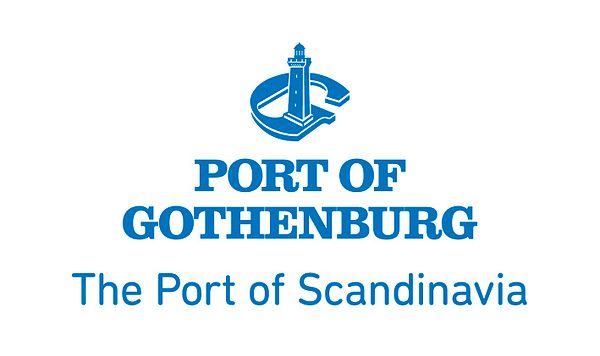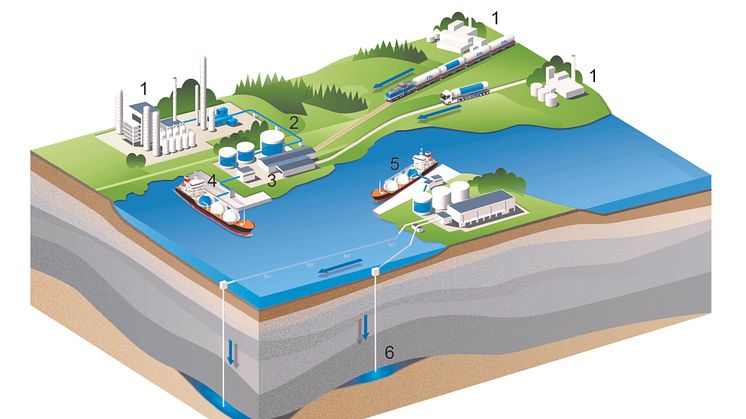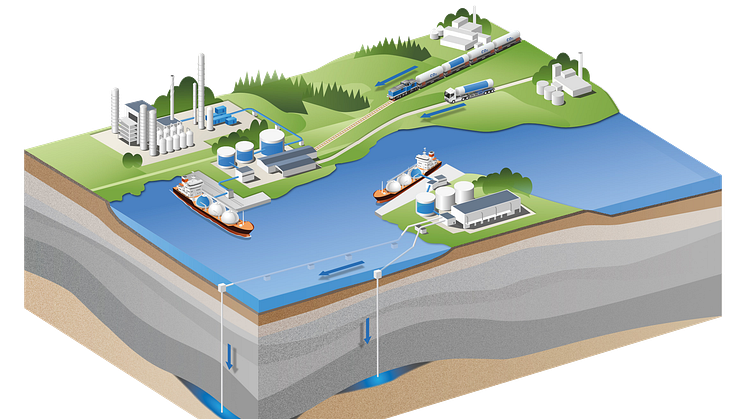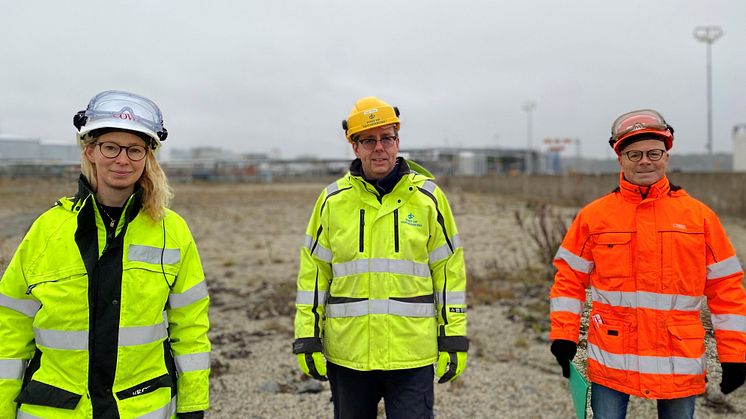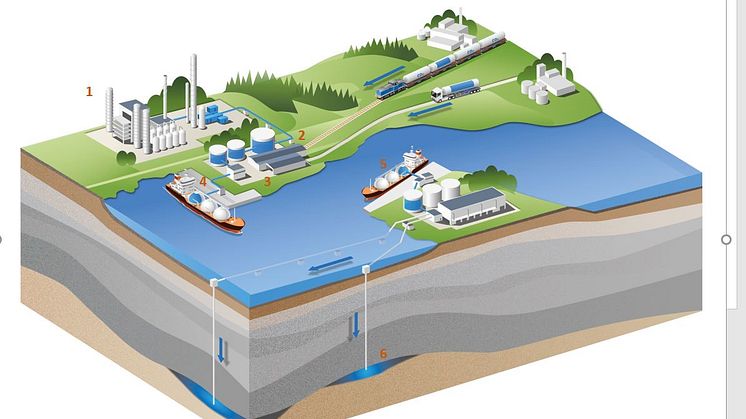
Press release -
Gothenburg a step closer to becoming a hub for transport of captured carbon dioxide
The Swedish Energy Agency has approved the partial funding of the collaborative project CinfraCap, bringing the region a step closer to a carbon capture infrastructure at the Port of Gothenburg.
The capture and storage of carbon dioxide is one of the most important means at our disposal in the drive towards radically reducing carbon emissions. During 2020/2021, the CinfraCap project embarked on a preliminary study that revealed that a joint logistics and infrastructure solution for the transport and interim storage of carbon dioxide from factory gate to quayside would be feasible.
“The infrastructure at the Port of Gothenburg could be of crucial significance to the transport of captured carbon dioxide from the entire country to a sub-seabed repository. I’m pleased to report that we have now received notification that the Swedish Energy Agency will provide partial funding, allowing us to continue working on phase two of the project,” said Anna-Karin Jannasch at Nordion Energi AB, who is sub-project manager for CinfraCap. “There will be a focus on estimating charges for using the various parts of the infrastructure, including the liquefaction plant and interim storage facility, as well as developing an effective business model for CinfraCap. Throughout this process due account is taken of the other parts of the value chain and harmonisation with the rules and regulations surrounding CCS/Bio-CCS will be assured at all times.”
Climate goals in focus
The true potential of CinfraCap became apparent during the preliminary study in spring 2021. Using the parties’ fully expanded facilities alone it is estimated that around two million tonnes of carbon dioxide can be stored each year. This is equivalent to 75 per cent of emissions generated by domestic transport in the Västra Götaland region.
“By making the infrastructure accessible to all – known as third-party access – we are convinced that the CinfraCap infrastructure will contribute to achieving further significant reductions in carbon emissions. This is something that we, in line with many others, are striving to achieve in a concerted effort to meet our climate goals,” said Anna-Karin Jannasch.
Factfile: CinfraCap
CCS, Carbon Capture and Storage, is widely regarded as a key component in the transition of the global energy system, and several research and development projects are already under way. The various parties within the CinfraCap project are looking to join forces to identify the most effective way of approaching the industry-scale logistics required to support CCS. The idea is to present concrete proposals for an optimised infrastructure, and link into other CCS projects. Once the infrastructure is in place, the aim is for it to be an open access system, expanding its potential user base.CinfraCap will complement a number of other ongoing research and development projects, including the Climate Smart Industry initiative, Preem CCS, ZEROC, and NorthernLights, which is a full-scale carbon capture and storage project being run off the west coast of Norway.
CinfraCap is a collaborative project between Nordion Energi, Göteborg Energi, Renova, the Gothenburg Port, Preem, and St1.
Read more about CinfraCap here.
Fact file: CCS
Carbon Capture Storage, CCS, involves trapping carbon and liquefying it under pressure and at low temperature. It can then be safely stored deep underground, in many cases below the seabed, reducing emissions of greenhouse gases into the atmosphere. If the carbon dioxide is captured from a biogenic source, known as a BECCS, the proportion of carbon dioxide emitted into the atmosphere can be reduced.
Illustration
1. Carbon dioxide capture facility.
2. Liquid carbon dioxide is transported via pipelines from capture plants nearby and by road or rail from plants further away.
3. CinfraCap reception site with temporary storage at the Port of Gothenburg.
4. Liquid carbon dioxide is loaded onto a ship using a loading arm.
5. Receiving terminal where liquid carbon dioxide is discharged and pumped into rock formations 3,000 metres below the seabed.
6. Porous rock, with impermeable rock above, where liquid carbon dioxide is returned.
If you have any questions, please feel free to contact:
Anna-Karin Jannasch, Senior Project Manager, Business Innovation Nordion Energi AB
Tele: +46 (0) 70 230 70 28
anna-karin.jannasch@nordionenergi.se
or
Alexandra Angelbratt, Project Manager, Göteborg Energi
Tele: +46 (0) 70 413 88 31
alexandra.angelbratt@goteborgenergi.se
Related links
Topics
Categories
Fact file: Port of Gothenburg
The Port of Gothenburg is the largest port in Scandinavia. Around 30% of Swedish domestic and foreign trade passes through the Port of Gothenburg and around 50% of all container traffic. The port is a full-service port, and offers industry guaranteed, climate-smart access to the whole world. Direct services to key markets ensure highly efficient, sustainable, and reliable transport 24 hours a day, 365 days a year. The focus is firmly on sustainability, innovation, and digitalisation in a concerted effort to maintain the ongoing development of climate-efficient freight transport and calls by vessels. With 25 rail shuttles offering daily departures, companies throughout Sweden and Norway have a direct, climate-neutral service to the Port of Gothenburg. The port operates energy product, vehicle, ro-ro, container, and passenger terminals and has 22,000 employees.
Follow us on:
Facebook
Instagram
LinkedIn
Twitter
www.portofgothenburg.com
